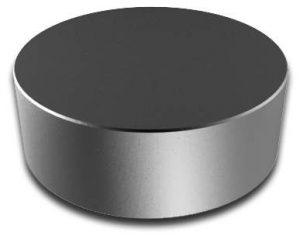
When shopping for commercial-grade magnets, you may come across ceramic magnets. They are used in electric motors, lifting devices, stereo speakers, microwaves, communications systems and more. Like all magnets, ceramic magnets produce a magnetic field. But they feature a unique composition that sets them apart from the rest.
#1) Also Known as Ferrite Magnets
Ceramic magnets are also known as ferrite magnets. This is due to their composition of iron oxide mixed with strontium carbonate. Iron oxide is essentially rust. Ceramic magnets are made mostly of iron oxide and a small amount of strontium carbonate. The combination of these ingredients results in a permanent magnet.
#2) Made Via Extrusion
Most ceramic magnets are made via extrusion. Extrusion is a manufacturing process in which a material is forced through a narrow passage. To produce ceramic magnets, manufacturers will typically mix iron oxide mixed with strontium carbonate, after which they’ll force it through dies. Following this extrusion process, sintering may be used along with grinding or shaping.
#3) Heat Resistant
Magnets typically become weaker when exposed to heat. Fortunately, ceramic magnets are heat resistant. They can withstand more heat than other types of magnets while retaining their strength. It can take temperatures of up to 400 to 500 degrees Fahrenheit for a ceramic magnet to demagnetize. You should still try to keep them away from heat sources, but ceramic magnets are known for their heat-resistant properties. It takes extreme heat for ceramic magnets to demagnetize.
#4) Available With Coatings
You can find ceramic magnets with or without coatings. A coating is simply a layer that’s applied over the surface of a ceramic magnet. Most coatings are designed to enhance the physical properties of ceramic magnets. Zinc, for instance, is commonly used to protect ceramic magnets from corrosion. Polytetrafluoroethylene (PTFE), on the other hand, is used to protect ceramic magnets from breakage.
#5) Customizable Magnetic Strength
The magnetic performance of ceramic magnets can be customized during the manufacturing process. This involves the application of a magnetic field. When a magnetic field is applied to a ceramic magnet during the manufacturing process, the magnetic performance will increase. As a result, ceramic magnets are more customizable than many other types of magnets.
Ceramic magnets are one of the most common types of permanent magnets. Also known as ferrite magnets, they are made via extrusion, offer excellent heat-resistant properties, are available with or without coatings and their magnetic performance can be customized.
